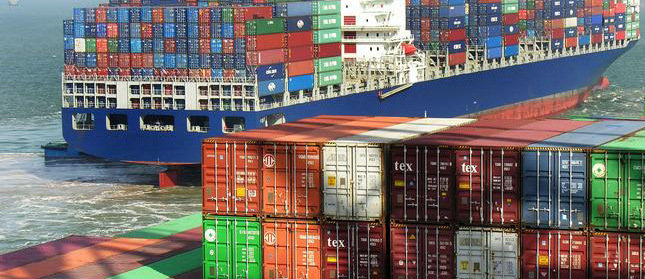
While port congestion is nothing new, leaders in the transportation and logistics industry say the current delays and disruption in the supply chain is much different than cycles seen in the past.
“What we’ve got now is different than what we have seen before because we have saturation across all nodes,” John Butler, president and CEO of the World Shipping Council, said during American Trucking Associations’ 2021 Management Conference & Exhibition (MCE) in Nashville. “We’ve got a situation where our collective customers aren’t able to pull the goods forward out of the ports because they’ve got no place to put them or no way to send them on to their final destination.”
As Fleet Owner reports, a panel of experts agree that longstanding challenges are now combined with new supply chain disruptions caused by the pandemic, which has carriers, railroads, shippers and consumers “on edge.”
“The good news, though, is that in the same way this thing kind of got worse over time and one negative challenge would lead to another, when it starts to unwind, I think we are going to see synergies across the supply chain,” Butler added. “If it starts to unwind in one place, it will make it a little better back up the chain.”
Moderated by Shelley Simpson, chief commercial officer for J.B. Hunt, the panel also included ATA President and CEO Chris Spear, Association of American Railroads (AAR) President and CEO Ian Jefferies, and National Shippers Strategic Transportation Council (NASSTRAC) Executive Director Gail Rutkowski joined Butler to address today’s supply chain challenges within their specific sectors.
A unique challenge for shippers, NASSTRAC’s Rutkowski said, is that many of them didn’t take the time when they had the chance to thoroughly determine the importance of the supply chain within their own companies. Butler noted that from an international ocean shipping perspective, WSC is seeing the same thing that many are seeing domestically and all over the world.
“The problems we are having here—particularly with port and inland congestion and the difficulties getting labor and keeping cargo and equipment moving as opposed to sitting at a port or customer warehouse—are happening all over the world,” Butler explained. “In order for all of this to unwind, we need to see improvement in ports all over the world at the same time.”
Pointing out that the supply chain is truly integrated, AAR’s Jeffries noted that when any piece of the supply chain can’t operate at full capacity, it has reverberating impacts. The rail sector, he said, has seen unprecedented volumes in the last six months, and this year the rail industry moved a record amount of intermodal freight.
ATA’s Spear said he believes it will come down to collaboration among all modes.
“I always look at trucking as the glue,” Spear said. “We are involved in so many points along the way throughout the supply chain, so we see a lot as a result of that. The driver shortage/worker shortage is really our front-burner priority and to get more talent into the industry and moving more freight as an outcome of that. We are also seeing some additional elements throughout the supply chain that are just as impactful—chassis shortage, yard space, and the ability to stack containers from two to four was just recently lifted in California so we have more space to position the containers before they are loaded on the chassis or the train.”
“It’s a culmination of a bunch of things under that worker shortage pressure that is making a very significant challenge,” Spear added.
So, when will things get back to normal for the supply chain? ATA’s Spear projected at least three quarters—if not four—before some of this gets resolved. But he anticipates it will be turbulent along the way.
Jefferies warned that government intervention and new regulations in the middle of a crisis can be “extremely damaging and shortsighted.”
“I would really caution policymakers, the government, and the administration to step back and refrain from that knee-jerk need to get in and do an emergency order here or a regulatory order there,” he said. “It may feel good at the moment, but you’re most likely causing more harm than helping the system overall for the long run.”
As for Rutkowski, she doesn’t necessarily want to go back to normal because normal hasn’t been working. Instead, she emphasized the need for the supply chain to unify and work together.
“Shippers need to get smarter,” she advised. “They need to get better about how they communicate and talk to their providers. And providers need to be more forthcoming about some of the issues may be caused by the shippers. If you don’t tell them, they can’t fix it. That would help, but why would we want to return to normal? It isn’t working.”
Full Fleet Owner article here.
